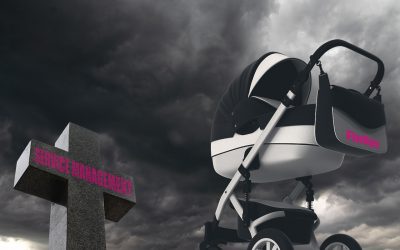Most support organizations use a tiered support model for handling incoming requests. It all starts with level 1 (the service desk) and requests can be escalated to higher levels of support based on the complexity of the issue and the skills and knowledge of the previous support levels. Generalists (people that know a little about a lot of things) are typically found in the lower tiers while specialists (people with deep knowledge about a limited number of topics) can be found in level 3 or higher.
The success of this model lies in the assumption that each tier can solve the majority (around 70%) of incoming requests without the need to involve other support levels. This way the majority of the issues are solved by employees that cost less and are easier to find and replace. So all in all this seems to be a very effective and efficient way to organize your support efforts, despite the well-known disadvantages like numerous handoffs, bouncing between tiers and limited exchange of information and knowledge.
To further optimize operational efficiency, most support organizations are working on the ‘shift-left’ principle. Shift left refers to increasing the ability to solve requests at lower support tiers and even introduce a ‘tier 0’: the customer. By providing self-service functionality, combined with knowledge and AI-driven technology we try to empower customers to answer their own question or solve their own issues without the need to contact service employees.
Although this turns out to be more difficult than it seems, the benefits for the support organization are obvious: handle more demand without increasing costs, less repetitive work and more time to tackle complex and challenging issues.
Shift-left initiatives focus on support requests that can be classified as ‘known’. It has been solved before and we have content (knowledge articles or templates) available with the answer or solution. All other requests are classified as ‘new’ and need to be handled by knowledge workers.
The obvious goal of shift-left initiatives is to let customers or low support tiers solve the known requests. As a consequence, the majority of the requests that will be handled by knowledge workers is new. This puts pressure on the traditional tiered support because the assumption that each support tier can solve at least 70% of the incoming requests is no longer valid. The number of escalations will increase rapidly, emphasizing the shortcomings of this model.
So from a process perspective it seems that we have a problem. But what about people?
According to research performed by Gallup, 70% of the American workforce is disengaged, meaning employees work just hard enough not to get fired and get paid just enough to not quit. This disengagement is caused by lack of motivating factors like autonomy, human connection, growth and development, a career perspective and various other intrinsic aspects. Although this research only looked at the workforce in the US, there is little reason to assume this situation is completely different in Europe. In his book ‘Now Discover Your Strengths’, author Marcus Buckingham explains that companies only use 40% of the skills of the people they employ, mainly due to how organizations and jobs are structured. Most processes are linear, almost production-like and work mainly depends on analytical, sequential and textual skills with little room for individual initiative and creativity. Emphasis is put on eliminating weaknesses rather than developing strengths and collaboration is frustrated by the siloed tier-structure.
“Companies use only 40% of the skills of their employees”
So the problem is clear: support organizations are not set up correctly for successful shift left initiatives and are underutilizing the skills and talents of their employees. We need a different support model which addresses these issues. In a follow-up blog we will explain why Intelligent Swarming could be the future for many support organizations. So stay tuned!



